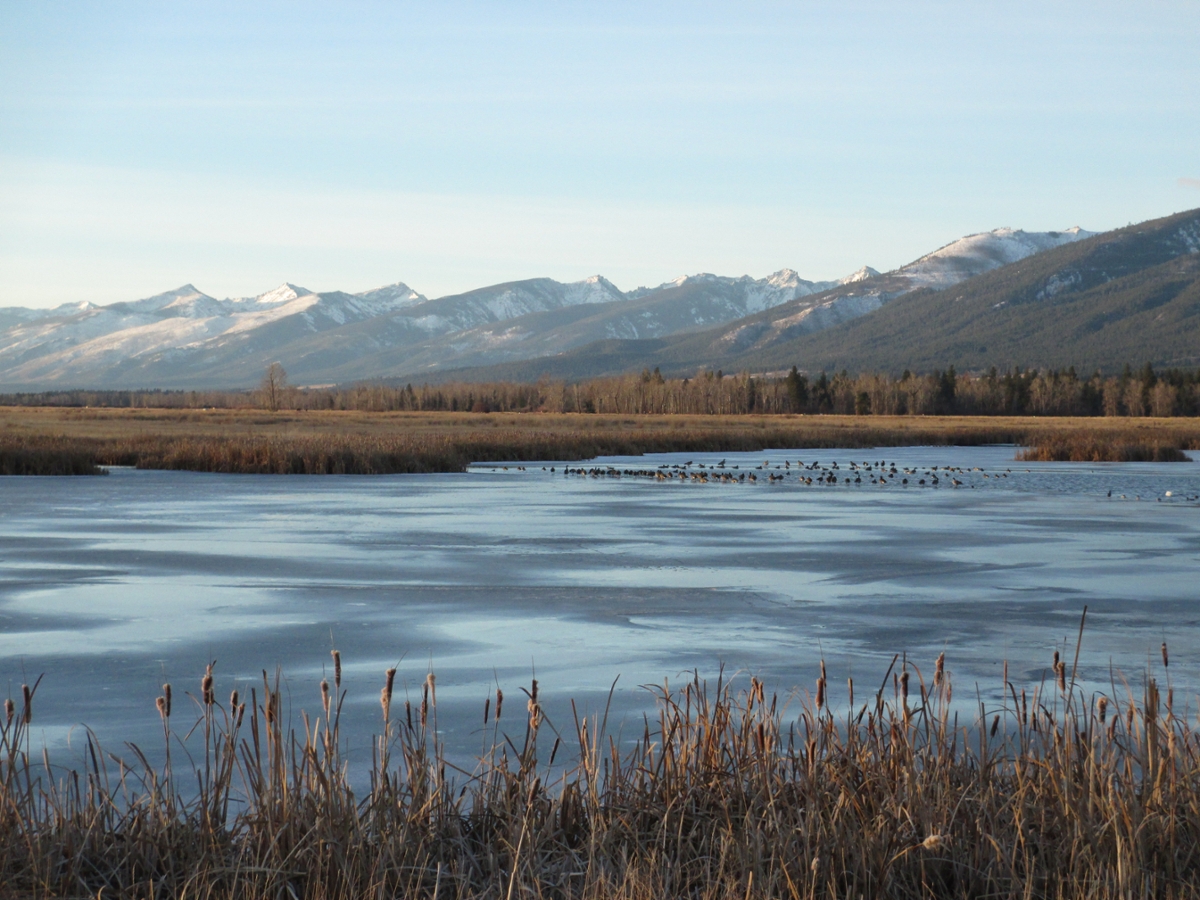Lee Metcalf National Wildlife Refuge (Part 2 of 2)
 Lee Metcalf Pond: The moderate winter climate of Bitterroot Valley usually results in pockets of open water on Lee Metcalf National Wildlife Refuge wetlands. (Photo by Bob Danley, U.S. Fish and Wildlife Service)
Lee Metcalf Pond: The moderate winter climate of Bitterroot Valley usually results in pockets of open water on Lee Metcalf National Wildlife Refuge wetlands. (Photo by Bob Danley, U.S. Fish and Wildlife Service)
The waterfowl and wildlife take center stage and offer visitors a variety of performances throughout the year at the Lee Metcalf National Wildlife Refuge.
Wildlife-oriented public use on the Lee Metcalf National Wildlife Refuge is encouraged. Archery hunting for the substantial white-tailed deer population is permitted, and during the fall and winter months, waterfowl hunting is also an important activity on designated ponds. Fishing is also allowed along the Bitterroot River and the slough in the wildlife viewing area. Local residents, ducks, birds and white-tailed deer can be seen in the river bottoms, sloughs, woods and grasslands. A level two-mile walking path in the Wildlife Viewing Area meanders through cottonwoods, giving visitors of all ages a chance to get out and possibly see some of the critters that call the refuge home. Orientation and well-written interpretive information is posted in a kiosk at the trailhead.
The forested riparian habitat is replaced by grassland and wetlands east of the Wildlife Viewing Area. Though closed to the public outside of hunting season, the area is actively managed using dikes to create wetlands of various depths and sizes to accommodate a wide variety of waterfowl and aquatic food sources. This intersection of land and water is also habitat for butterflies, dragonflies, small mammals and aquatic plants. The fourteen wetlands running north and south down the center of the refuge total some 30 percent of the wetland acreage in the Bitterroot Valley.
Scientific studies on the refuge include the monitoring of waterfowl, shorebirds, colonial nesting water birds, osprey, bald eagles and white-tailed deer. Visitors also can participate in citizen science by submitting their own observations (plants or animals) to refuge staff by email or formally enter birding data via E-Bird. The refuge participates in E-Bird tracking via a Cornell Laboratory of Ornithology website widget, which allows visitors to track bird sightings and contribute to conservation and management efforts
Initially, refuge headquarters were in Stevensville, just a few miles to the south of today’s office. In 2004, a maintenance building was retrofitted as the new visitors’ center. The staff here can provide maps and other information on this valuable bit of Bitterroot topography, including how to participate in the annual community event called Welcome Back Waterfowl Day in early April, which celebrates the return of migratory birds from the south. Welcome Back Waterfowl Day will be held from 10 a.m. to 2 p.m. April 11.
Opportunities exist for people with all levels of birding knowledge. Those interested in gaining an understanding of birds, waterfowl and other animals in the area are encouraged to join refuge staff in field outings. Every third Saturday of the month, the refuge offers guided wildlife sighting excursions free of charge. Other events, activities and information can be found on the extensive refuge website.
The refuge offers a respite from the growing buzz of the Bitterroot Valley, and the wildlife encounters and education opportunities are truly spectacular. We hope you too will find your way to the refuge and find out for yourself what a precious resource it is.
Department of Geography | University of Montana | Rick and Susie Graetz
